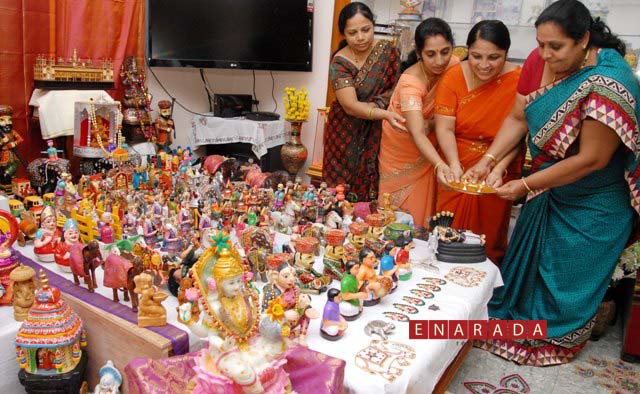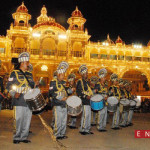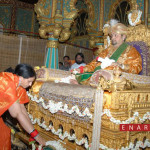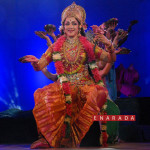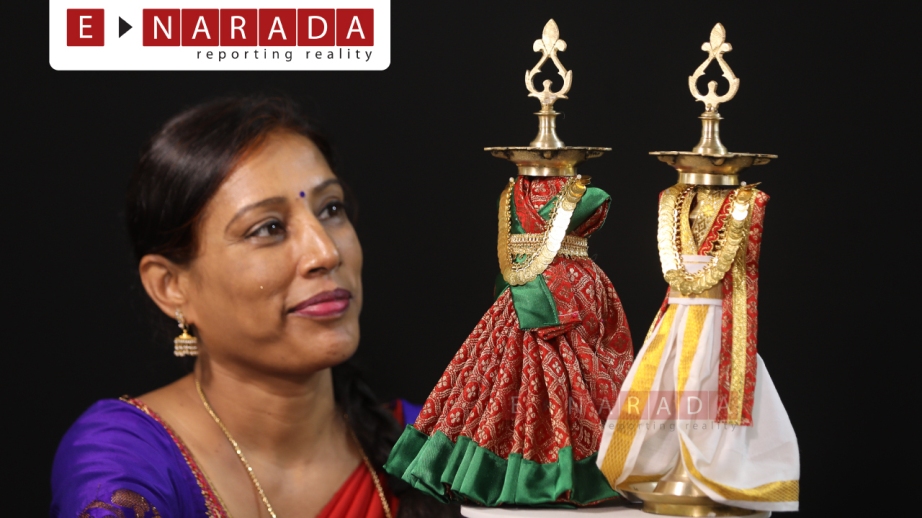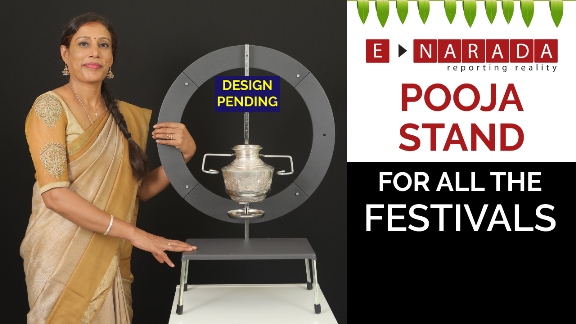ENARADA, Mysore, October 10, 2013:
‘Gombe Habba’(Festival of Dolls) – a tradition unique to the area and started several centuries ago by the early rulers of Wadiyar dynasty, reflects the skills of the women folk and brings the mirth associated with the famous Dasara festivities, to every home in the city of palaces.
Almost all the houses here makes arrangements of dolls that attract large people particularly children.
The palace board sources said that a festival of dolls that signifies the nine incarnations of Goddess Durga, and which children anxiously waited for, is slowly losing its patronage among women and young children alike.
Artistically arranged dolls with intricate works showcasing the skills of women are fast disappearing from the traditional homes.
The dolls festival dates back to the period of Raja Wadiyar in the 16th century. Initially, the idol of Gowri was decorated in a special manner and worshipped for nine days. By the end of the 18th centuries, the royal family introduced dolls. To celebrate the festival of dolls, the royal family earmarked place in the Mysore palace, and referred it as ‘Gombe Totti’ (Dolls pavilion).
This dolls festival was later introduced into the public domain by officials in the royal service, and the practice of arranging dolls at home during the Navarathri started. The tradition of gifting ‘Pattada Bombe’ to daughters during their marriage also contributed to the popularity of ‘Gombe Habba’. Playing with the dolls was a favorite pastime among the young marriage girls those days.
The arrangement of dolls revolved around the ‘Pattada Bombe’ made out of Chandana wood (sandalwood), procured from Thirupati, in rural, the practice of preparing ‘bombe bagina’ or a snack on all the nine days was a popular affair during the Dasara and children would invite friends to their home to have a glimpse of the dolls arrangements.
“The festival was basically celebrated to make children happy, and children had a say in the arrangements” said Mr. Nagendra Prasad from Saraswathi puram. He mentioned that their forefather’s used to celebrate Dolls festivals in style and the same tradition of arranging dolls in his house is continuing till today.
The festival was also an occasion for entertainment and evolved into a platform to show the artistic skills of the housewives.
Dolls are arranged in a hierarchy of nine steps, and each day new dolls are added in each step. The hierarchy symbolizes the nine incarnations of goddess durga in the form of shailapurti, brahamacharini, chandraghatna, kooshimanda, skandamata, katyayani, kalarati, maha gowri and siddiratri, who attained these forms to ward off the evils in the form of asuras, mahishasura, madukaitaka, shumba rishamaba and others.
Now the arrangement is used to send messages of public importance, ramansons kala paratishana, a city based art gallery, has organizing a doll festival, bombe mane 2013 in which exhibition of dolls from across the country, dolls of Karnataka, Andhra Pradesh, Tamilnadu, Kerala, Maharashtra, Madhya Pradesh , Gujarat, Rajasthan , Uttar Pradesh , Bihar and west Bengal have been lovingly made by craftsman and painstakingly collected over a period of time. Even dolls collected over generations have been taken out from wooden chests or almirhas and neatly arranged on wooden steps. The exhibition has now opened for public until end of the dasara festivities.
Lack of interest among the children, constraint of time and space and the advent of other sources of entertainment such as the TV, Internet and Radio caused the decline of this once popular tradition in the city of heritage.
The Wadiyar rulers who introduced ‘Gomba Habba’ to the Mysore region also had an exclusive gallery to display dolls during the dasara festival. Referred to as ‘Gombe Totti’ or the dolls pavilion, the gallery in the sore palace has collections of various objects of art including European marble sculptures acquired by royal family.
There is a wooden model of the old palace, which existed in the fort before 1897, and it depicts the period architecture, the marbles status of European origin dates back to 18th and 19th centuries created by Italian and Scandinavian sculptors. The metal sculpture representing the adage ‘grapes and sour’ is another interesting exhibit, and is fitted with lights, producing a realistic appearance. There are two porcelain decorative lamps of Japanese origin.

